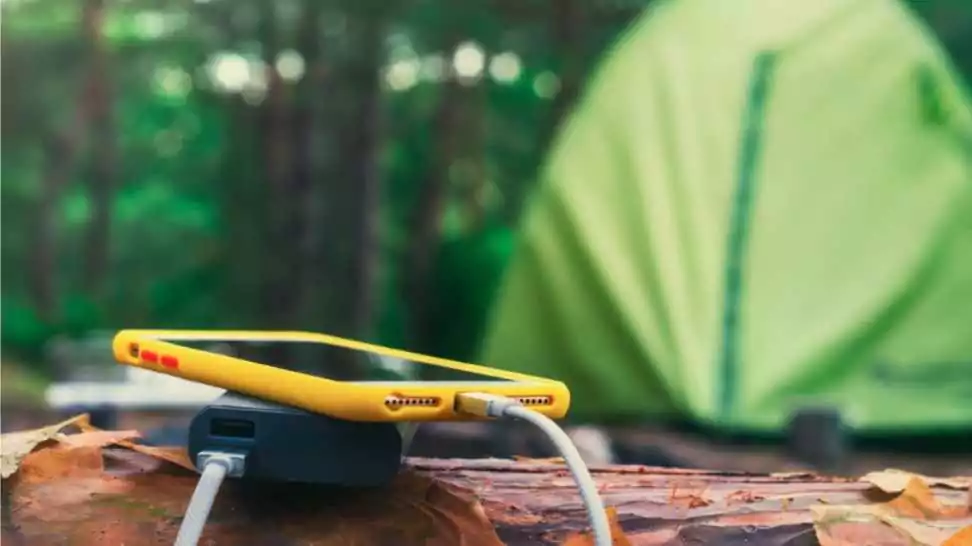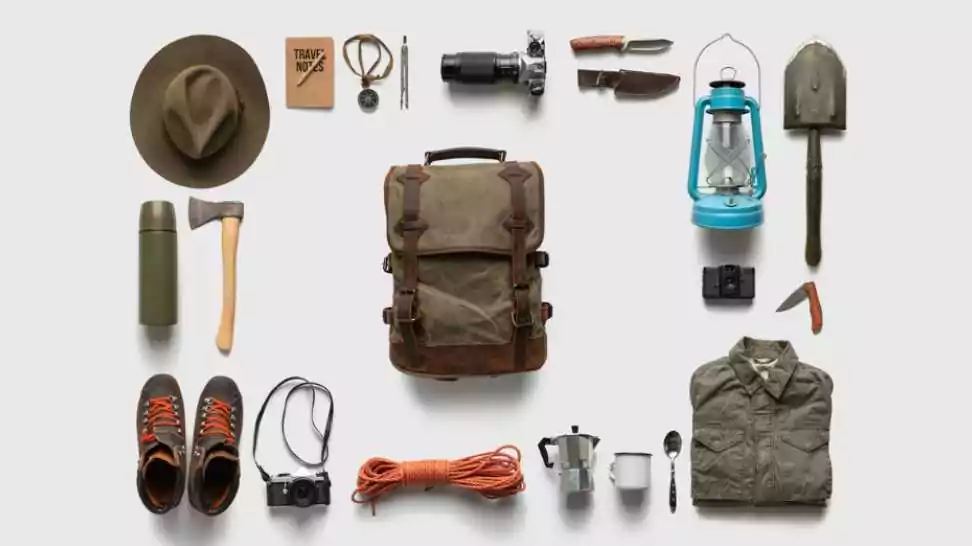Most Commonly Forgotten Things to Pack

Packing for a trip often rides a fine line between excitement and anxiety. On the one hand, there’s the thrill of anticipating new experiences, the joy of escaping routine, or the pleasure of visiting loved ones. On the other hand, packing can feel like a daunting puzzle, especially when trying to remember everything you might need. The challenge isn’t just about fitting everything into your suitcase; it’s about not forgetting those crucial items that, surprisingly, are easy to overlook.
In this blog, we aim to ease that packing-induced stress by addressing the most commonly forgotten things to pack Whether you’re a seasoned traveler or someone who occasionally takes a trip, our goal is to help you pack smarter and more efficiently. We’ve all been there – reaching our destination only to realize we forgot something seemingly obvious. That’s why we’ve put together a list of the most commonly forgotten items to pack. So, before you zip up your suitcase and head out the door, take a moment to peruse our list and ensure you’re fully prepared for your next adventure.
1 The Essentials Often Overlooked
When we think about packing, our minds often jump to clothes, shoes, and toiletries. However, some of the most crucial items are the ones that don’t immediately spring to mind. Here are some essential but often overlooked items to remember for your next trip:
Chargers and Power Adapters

Importance for Keeping Devices Charged: In our digital age, staying connected is more important than ever. Whether it’s your smartphone, tablet, or laptop, these devices are our lifelines for navigation, communication, and entertainment while travelling. Forgetting a charger can leave you disconnected at crucial moments, so always double-check that you’ve packed them.
Different Plug Types in Various Countries: Travelling internationally? Remember that different countries have different plug types and voltages. It’s essential to carry a universal power adapter or one that’s specific to your destination. This small gadget is a lifesaver, ensuring your devices stay charged no matter where you are.
First-Aid Kit

Basic Items to Include: Accidents happen, and it’s always best to be prepared. A basic first-aid kit should include band-aids, antiseptic wipes, and pain relievers. These items can handle minor cuts, scrapes, or headaches that might occur during your journey.
Personal Medications and Prescription Notes: If you’re on prescription medication, packing an adequate supply is critical. Also, carry a note from your doctor regarding these medications. This can be important for security checks and in case you need to source more during your trip.
Travel Insurance Documents

Importance of Having a Copy of Insurance Details: Travel insurance is your safety net. Having a hard copy or digital copy of your insurance details can be a lifesaver in emergencies. This ensures you have immediate access to your policy details, coverage information, and what to do in case of an emergency.
Emergency Contact Numbers and Policy Information: Along with your insurance details, keep a list of emergency contact numbers, including the insurance company’s hotline and local emergency services. Knowing who to call and having your policy information at hand can expedite assistance and support when needed.
2 Personal Care and Toiletries

While hotels and guesthouses often provide basic toiletries, relying on them can sometimes lead to disappointment. More importantly, personal care items are often tailored to individual needs and preferences, making them essential to pack. Here are some key personal care items and tips on how to pack them:
Toothbrush and Toothpaste

Tips for Packing Them Hygienically: Your toothbrush is a breeding ground for bacteria, so it’s crucial to pack it hygienically. Use a toothbrush holder or cover the head with a clean, small case. For extra hygiene, consider using disposable toothbrushes during your travels.
Considerations for Eco-Friendly Options: If you’re environmentally conscious, consider packing a bamboo toothbrush and toothpaste tablets. These options are not only eco-friendly but also space-saving and convenient for travel.
Sunscreen and Insect Repellent
Importance for Skin Protection: Sunscreen is essential for protecting your skin from harmful UV rays, regardless of the climate. Similarly, insect repellent is crucial in many destinations to prevent bites and associated diseases. These are easy to forget but vital for your health and comfort.
Recommendations for Travel-Friendly Sizes: Opt for travel-sized bottles to save space and comply with carry-on liquid restrictions. You can also purchase sunscreen sticks or insect-repellent wipes, which are compact and easy to apply.
Moisturizer and Lip Balm

Coping with Different Climates: Different climates can have various effects on your skin. A good moisturiser can help combat dryness in cold or arid destinations, while a lighter lotion can be ideal for humid environments. Don’t forget your lips – climate changes can easily lead to chapped lips.
Options for Sensitive Skin: If you have sensitive skin, stick to the products that work for you. Travelling is not the best time to experiment with new skincare products. Look for travel-sized versions of your favourite items or transfer some into small containers.
3 Clothing and Footwear Specifics
Clothing and footwear are, of course, packing essentials. However, amidst the common choices, there are specific items that are frequently overlooked yet can make a significant difference in your travel experience. Here’s what to remember:
Swimwear and Lightweight Jacket

No matter your destination, it’s wise to pack for the unexpected. A swimsuit takes up minimal space and keeps you ready for impromptu beach visits or hotel pools. Similarly, a lightweight jacket is essential, even in warmer climates, as evenings can be cool, and air conditioning can be chilly.
Comfortable Walking Shoes

Importance for Exploring Destinations: A pair of comfortable walking shoes is a must-have for any trip. Whether you’re navigating city streets, exploring historical sites, or hiking nature trails, good footwear can be the difference between an enjoyable day out and a painful experience.
Suggestions for Versatile Styles: Look for shoes that are not only comfortable but also versatile. A pair that can take you from daytime exploration to a casual evening dinner can save significant suitcase space. Options like stylish sneakers, cushioned flats, or supportive sandals can be ideal, depending on your destination.
4 Special Items Based on Destination
Travelling often involves immersing yourself in new cultures and environments, which can require specific items tailored to your destination. Here’s what you should consider:
Cultural and Weather-Appropriate Clothing
Researching Destination Norms and Climate: Before you travel, research the cultural norms and climate of your destination. This research can guide you in packing clothes that are not only weather-appropriate but also culturally sensitive. For example, some cultures or religious sites require covering shoulders and knees.
Packing Respectfully and Practically: While respecting local customs, also consider practicality. Lightweight, breathable fabrics are ideal for hot climates, while layers work best for variable temperatures. Always aim to strike a balance between cultural respect, comfort, and practicality.
Specific Gear or Equipment

For Adventure or Activity-Based Trips: If your trip involves specific activities like hiking, skiing, or diving, you’ll need to pack accordingly. This could mean hiking boots, thermal wear, or specialised gear. Ensure you have the essentials to safely and enjoyably participate in these activities.
Renting vs. Packing Considerations: Assess whether it’s more practical to rent equipment at your destination or bring your own. Renting can reduce your luggage load and may be more convenient for bulky or specialised equipment. However, for comfort and familiarity, packing your gear, like hiking shoes or a snorkel mask, might be preferable.
5 The Final Checklist

Packing effectively is an art that combines forethought, personalization, and experience. As we conclude, here’s a guide to creating your final checklist, ensuring you leave nothing important behind:
Creating a Personalised Packing List
Start by creating a list that reflects your specific needs and the nature of your trip. Consider factors like the trip’s duration, the weather, planned activities, and personal preferences. A personalised list helps ensure that you pack everything essential for you.
Last-Minute Check Items Before Departure
Before you head out, double-check for items that are often last-minute additions or easily forgotten. These include your phone charger, travel documents (passports, visas, tickets), prescription medications, and any chargers or adapters. A quick run-through of this list can prevent last-minute panics.
Incorporating Lessons from Past Experiences
Every trip teaches us something about our packing preferences and needs. Reflect on your past travel experiences to remember what you missed or didn’t use. Maybe you packed too many clothes last time or forgot a crucial item like a camera charger. Use these lessons to refine your packing strategy.
6 Wrapping Up
Packing for a trip can sometimes feel overwhelming, but with a little planning and foresight, it can be a stress-free and even enjoyable part of your travel preparations. Remember, the goal of packing smart is not just to fit everything into your suitcase; it’s to ensure that you are prepared, comfortable, and able to fully enjoy your journey.
So, as you embark on your next adventure, take these tips with you. Travel prepared, embrace new experiences, and most importantly, enjoy every moment of your journey. Here’s to packing wisely and creating unforgettable memories!
Community Q&A
About This Article
This article has been viewed 131 times.



